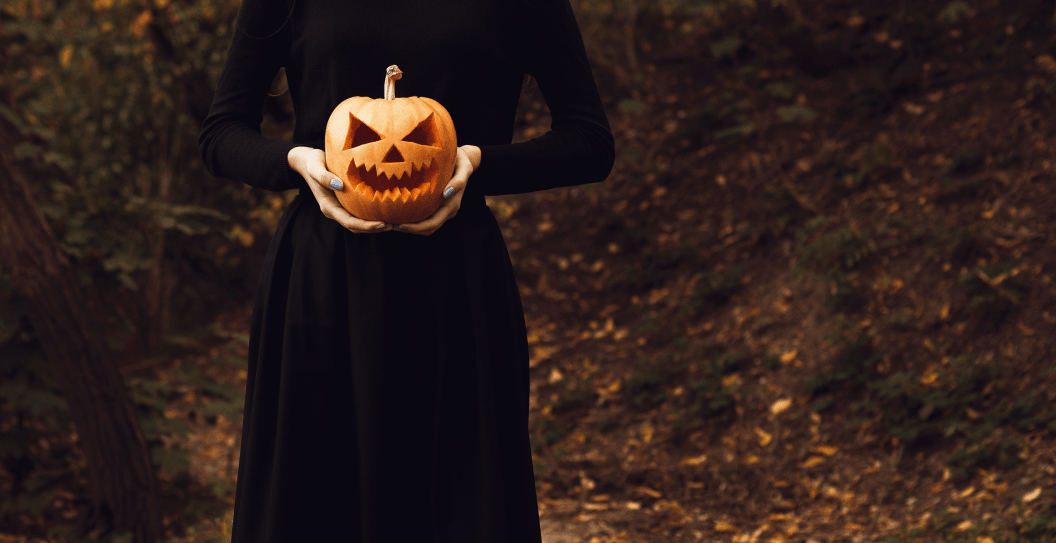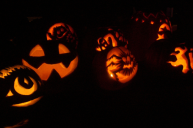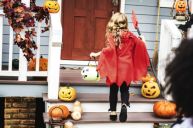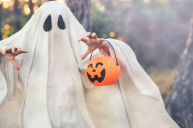For many, the fall season is the most wonderful time of year. And we all know fall is the gateway to all things magical and spooky. Every neighborhood undergoes a creepy transformation as yards become burial grounds with mischievous skeletons peeking out. Giant spiders spin their webs on porches while the chilling laughter of witches echoes from distant windows. It's probably kids — but, you know, better to be safe than sorry.
Videos by Wide Open Country
That's right. Halloween is right around the corner, and Halloween is turning houses into monuments of one of the best holidays of the year. You'll see decorations up and down each street. Turn on the TV and see Hocus Pocus and other fun movies about ghouls, mummies, goblins, vampires and Frankenstein. They're on frequent rotation on our television screens, because what better way to ring in spooky season? Orange pumpkins and black cats galore!
That also means trick-or-treaters dressed in fun and scary Halloween costumes will soon be stopping by. Some people will paint their nails black and orange, and those who are really excited about the holiday will wear festive black-and-orange clothes. It's all up to you how you want to make the holiday your own, but one thing never changes: those familiar orange-and-black hues.
While other countries celebrate this holiday a little differently than Americans do, it's safe to say that our Halloween colors and decorations are widely recognized. Just like red and green are considered Christmas colors, orange and black have come to represent the spooky holiday. Have you ever wondered exactly why our Halloween colors are black and orange? Interestingly enough, black and orange weren't always associated with Halloween.
But how did they come to be? Don't worry, we'll delve into that. The next time someone asks you about why you're wearing these festive Halloween hues, you can tell them exactly why — and give them a mini history lesson they won't soon forget!
The History of Halloween Colors
Our ghostly traditions apparently began over 2,000 years ago with the Celts. They believed that the boundaries between the world of the living and the world of the dead were blurred right before the new year. They had several traditions and observed festivals that came with the cycles of the seasons.
According to History.com, "[Halloween] is thought to have originated with the ancient Celtic festival of Samhain, when people would light bonfires and wear costumes to ward off roaming ghosts." Samhain signaled the end of the harvest season and the onset of the colder, darker half of the year. Essentially, the Celts believed that on the night of Oct. 31, the boundary between the worlds of the living and the dead dissolved, allowing spirits to roam freely on Earth.
People also wore black clothing to the bonfires, traditionally a sign of mourning, to honor their late relatives. While lighting bonfires was one of the primary traditions, these weren't your average campfires. These bonfires were thought to have protective and cleansing powers, and they were more than just beacons in the night. They were communal spaces where people gathered to cook sacrificial animals and crops for the deities.
You can put two and two together to see how orange flames and black clothing could go together with the Celts in mourning, and the hues could have evolved into something else — the way we celebrate the holiday now.
The Color Combinations of Orange & Black
We all know it's a staple of nearly every Halloween party. So when did the color orange come into play?
As we all know, orange is representative of various fall symbols, such as pumpkins, fall leaves and harvest season. Carved pumpkins — also known as jack-o'-lanterns — originated in Ireland, where people would carve lanterns out of potatoes and turnips to celebrate the Irish myth of Stingy Jack.
When the Irish immigrants came to the United States, they brought this tradition with them. As all traditions do, this one evolved. Today, it can be seen via the artistic and fun pumpkins you see along the streets in your neighborhood. Whether they're showing off their big, toothy grins with candles inside or painted with wild and whimsical images, you've got to love pumpkins lining every street during All Hallows' Eve.
As Bustle says, the colors were likely paired together because of the strong contrast of the two hues. Or, as we said previously, it could also be from the flames and the black of mourning. We may never know the exact reason, but we do have to admit both of those colors look frighteningly good together. There's no real reason not to wear them!
So when you pair your orange sweater with black slacks this year, just know that you're part of a centuries-long Halloween tradition.
Purple
While it may not be one of the traditional Halloween colors, in more recent years the color purple has been added to the Halloween color palette. So how did this come to be? According to Scientic American, a study showed that purple is often associated with children and laughter. So the incorporation of purple into our yearly Halloween decor could be a sign of the increased commercialism of the holiday. It's also a way to make the creepiness of Halloween decorations and costumes more palatable to children.
Consider it: Nowadays, Halloween's not just about haunted tales by the fireside or genuinely trying to ward off spirits. It's also about kiddos giggling in cute vampire costumes and inflatable friendly ghosts on front lawns. Incorporating purple, with its playful connotations, helps strike the balance between spooky and kid-friendly. It's a clever way for stores to say, "Hey, Halloween's fun for all ages!" At least, that's what it feels like to us. Halloween's for everyone. Take some time out to enjoy it this year!
This article previously ran in October 2020. It was updated on Aug. 8, 2023.




